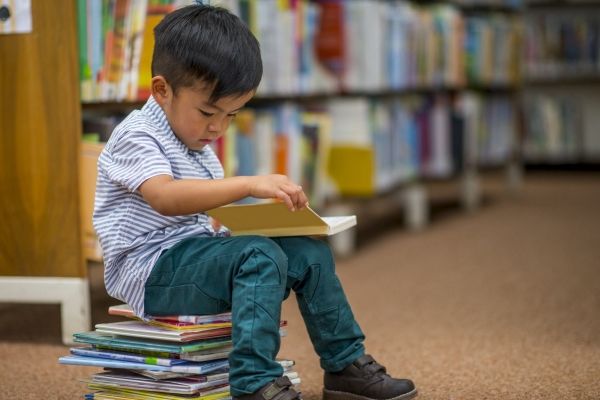Navigating emotions in the classroom and beyond
.jpg)
Navigating emotions in the classroom and beyond
24 January 2023
Socialising with others and thriving in a social environment like a school classroom comes naturally to some children.
Some children are social butterflies, but for many, socialising in a new environment can be overwhelming and overstimulating. As a caregiver, this can be a source of anxiety. Of course, you want your child to be calm and happy, but it can also be stressful trying to help them cope in an unfamiliar environment. Some kids will become quiet and shut down, while others will have tantrums because they struggle to regulate. Ultimately, children are just like us – but as adults, many of us have learned how to control our emotions better and navigate social situations.
The team at Slumberkins – an emotional learning brand focused on empowering children to be caring, confident and resilient – provides insights into how we can help our children navigate big feelings and circumstances through social and emotional learning.
Social and emotional learning
In its simplest form, social emotional learning (SEL) involves lessons that children (and adults) can use to:
• Understand their own emotions
• Show empathy towards others
• Communicate more effectively
• Build positive relationships
• Make decisions that positively impact themselves and others.
Educators who incorporate social emotional skills into their lesson plans often focus on helping students manage and overcome daily challenges so thatvthey’re more likely to succeed academically, socially and emotionally.
Starting from infancy into toddlerhood and beyond, you can encourage the foundation of age-appropriate SEL skills from home, including:
• Expressing what your child wants or needs to their caregivers
• Learning to form healthy relationships
• Regulating their emotions (within reason)
• Playing with other children.
Socialisation skills
 Some children feel more comfortable in a safe and quiet space like a library.
Some children feel more comfortable in a safe and quiet space like a library.
While a school setting may allow some children to thrive socially, other kids may not have the same experience or have access to the same experience. Socialising and thriving in a social environment naturally come naturally to some children. They look forward to making friends on the first day of school and don’t look back when their caregivers drop them off.
Other children may feel shy or uncomfortable in social situations, whether it’s their first school camp or speaking up in class. It’s important to recognise your child’s sense of socialisation in different settings so you can identify ways to support them and build connections that make them comfortable.
When it comes to SEL in early education, there are various frameworks that parents and educators can follow to help children with socialisation. In the United States, the Collaborative for Academic, Social, and Emotional Learning (CASEL) created one of the most widely used frameworks, which focuses on teaching children the following five key skills:
• Relationship skills include the abilities you learn to create and maintain healthy relationships and include: communicating clearly, actively listening, collaborating with groups, and asking for help or helping others when needed.
• Responsible decision-making skills – these skills revolve around being able to make logical and constructive choices. Children learn to factor in whether their possible solutions are safe and ethical and whether they’ll have positive or negative consequences.
• Social awareness skills – this includes understanding the perspectives of others and empathising with them. SEL teaches children to appreciate diversity, be open-minded to others, and be respectful.
• Self-awareness skills – these relate to your child’s understanding of their thoughts and emotions and how they impact their behaviour. With SEL, they can learn to identify their feelings, recognise their strengths and gain self-confidence.
• Self-management skills – once your little one has learned to understand their thoughts and emotions, they can work towards controlling them to help achieve their personal goals. Self-management skills they learn may include managing their stress levels, practising self-discipline, learning organisational skills and participating in goal-setting.
* For more information, go to slumberkins.com